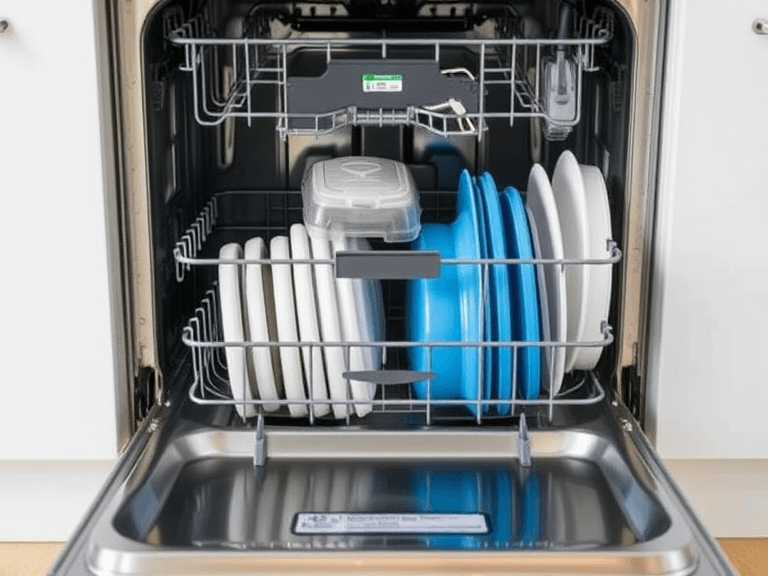A dishwasher is one of the most essential appliances in any modern kitchen, saving time, conserving water, and ensuring dishes come out sparkling clean. However, like any appliance, dishwashers have a limited lifespan and eventually need to be replaced. If you’re noticing consistent issues with your current dishwasher, it may be time to consider a replacement. In this blog, we at ZZ the HandyMan will guide you through everything you need to know about dishwasher replacement—from signs it’s time to replace, to selecting the right model, and finally, tips for installation.
Signs It’s Time to Replace Your Dishwasher
Dishwashers generally last between 7 and 12 years. If yours is nearing the end of its life or showing the following signs, replacement might be the best option:
- Frequent Repairs: If your dishwasher requires constant repairs, the cost of fixing it could outweigh the cost of buying a new one.
- Poor Cleaning Performance: If dishes consistently come out dirty or require pre-rinsing, the appliance may no longer be functioning effectively.
- Leaking Water: Water leakage not only damages your kitchen floor but can also signal a serious internal issue.
- Unusual Noises: Grinding, banging, or other loud noises could indicate mechanical failure.
- Energy Inefficiency: Older dishwashers tend to use more water and electricity. Upgrading to an energy-efficient model can save you money in the long run.
- Outdated Technology: Modern dishwashers come with advanced features like adjustable racks, quieter operation, and smart connectivity.
- Making Loud Noises : Many people replaces their dishwashers with a modern quieter version.
Choosing the Right Replacement Dishwasher
When replacing your dishwasher, it’s crucial to select a model that fits your kitchen’s layout, budget, and usage needs. Here are some factors to consider:
1. Size and Dimensions
Most dishwashers are designed to fit a standard 24-inch-wide space under the countertop. However, compact models (18 inches) are available for smaller kitchens. Measure your space carefully before making a purchase.
2. Capacity
Dishwashers come in different capacities:
- Standard: Holds 12-16 place settings, ideal for families.
- Compact: Holds 8-10 place settings, suitable for smaller households or apartments.
3. Energy Efficiency
Look for models with an ENERGY STAR® certification, which indicates lower water and energy consumption. This not only reduces your utility bills but also helps the environment.
4. Noise Level
Dishwasher noise levels are measured in decibels (dB). Models with a rating of 44 dB or lower are considered ultra-quiet.
5. Features
Modern dishwashers come with various features to enhance convenience:
- Adjustable racks
- Multiple wash cycles
- Soil sensors for efficient cleaning
- Smart connectivity for remote operation via smartphone
6. Brand and Warranty
Choose a reputable brand known for reliability and customer service. Check the warranty terms for peace of mind.
Steps for Replacing Your Dishwasher
Replacing a dishwasher involves several steps. While it’s possible to tackle the installation yourself, hiring a professional like ZZ the HandyMan ensures the job is done safely and correctly. Here’s a step-by-step overview:
1. Disconnect the Old Dishwasher
- Turn off the power supply to the dishwasher at the circuit breaker.
- Shut off the water supply line.
- Disconnect the water supply hose, drain hose, and electrical connections.
2. Remove the Old Unit
- Unscrew the mounting brackets that secure the dishwasher to the countertop.
- Gently slide the old dishwasher out of its space.
3. Prepare the Space
- Inspect the area for any water damage, mold, or debris.
- Clean and dry the space thoroughly.
- Ensure the electrical wiring and plumbing connections are in good condition.
4. Install the New Dishwasher
- Position the new dishwasher in place but do not fully slide it in.
- Connect the water supply hose, drain hose, and electrical wiring.
- Secure the unit with mounting brackets.
5. Test the Installation
- Turn on the power and water supply.
- Run a short cycle to check for leaks and ensure proper operation.
Tips for a Smooth Replacement Process
- Plan Ahead: Check the specifications of your new dishwasher to ensure compatibility with your kitchen.
- Use the Right Tools: Common tools include screwdrivers, pliers, and a wrench. A dolly may help with moving the units.
- Follow Safety Guidelines: Always turn off power and water before beginning the replacement process.
- Consult a Professional: If you’re unsure about any step, it’s best to call a professional handyman to avoid mistakes and potential hazards.
The Benefits of Upgrading
Replacing your old dishwasher comes with several advantages:
- Improved Efficiency: Modern dishwashers use less water and energy, saving you money.
- Enhanced Performance: Advanced technology ensures better cleaning and drying results.
- Convenience: Features like smart connectivity and adjustable racks make daily tasks easier.
- Increased Home Value: A new, high-quality dishwasher adds appeal to your kitchen.
Why Choose ZZ the HandyMan?
At ZZ the HandyMan, we understand that replacing a dishwasher can feel overwhelming. That’s why we’re here to help. Our experienced team offers:
- Professional installation services
- Guidance on selecting the right model
- Affordable rates and exceptional customer service
Final Thoughts
A well-functioning dishwasher is a must-have in any busy kitchen. If your current appliance is no longer meeting your needs, replacing it with a modern, energy-efficient model can make a world of difference. For expert advice and reliable installation services, contact ZZ the HandyMan today. Let us handle the hard work so you can enjoy spotless dishes without the hassle!


